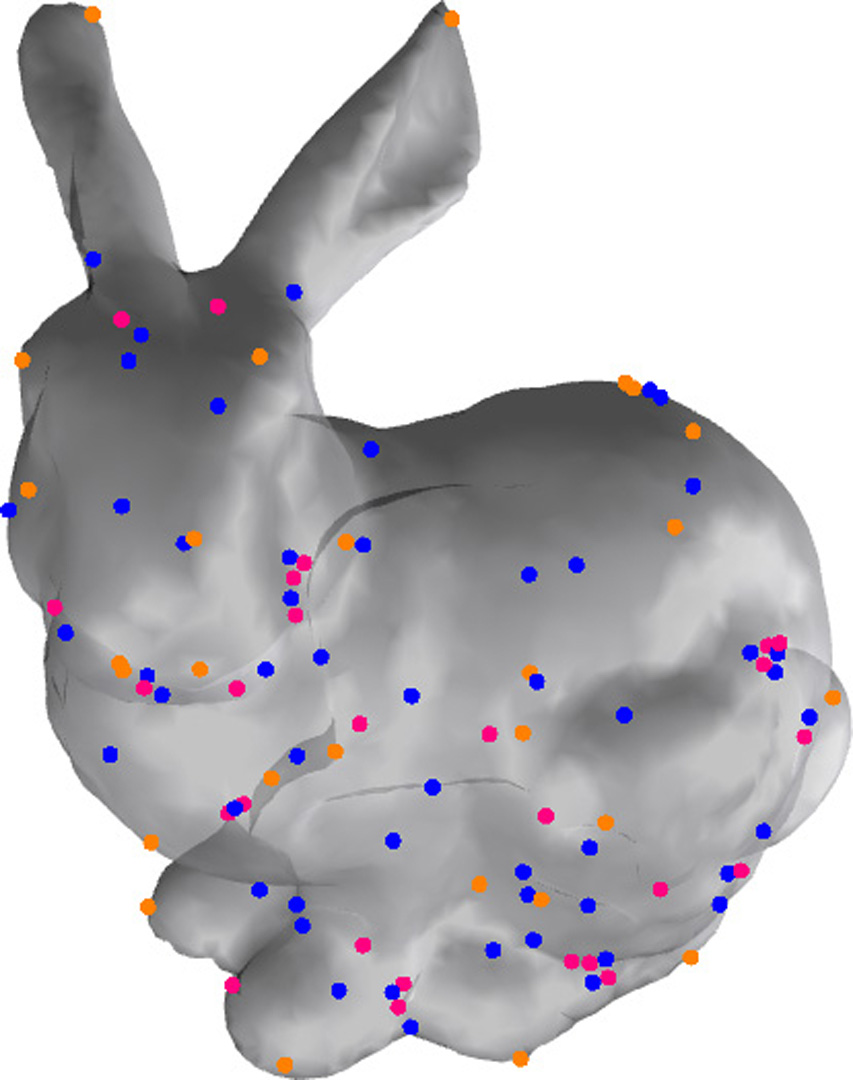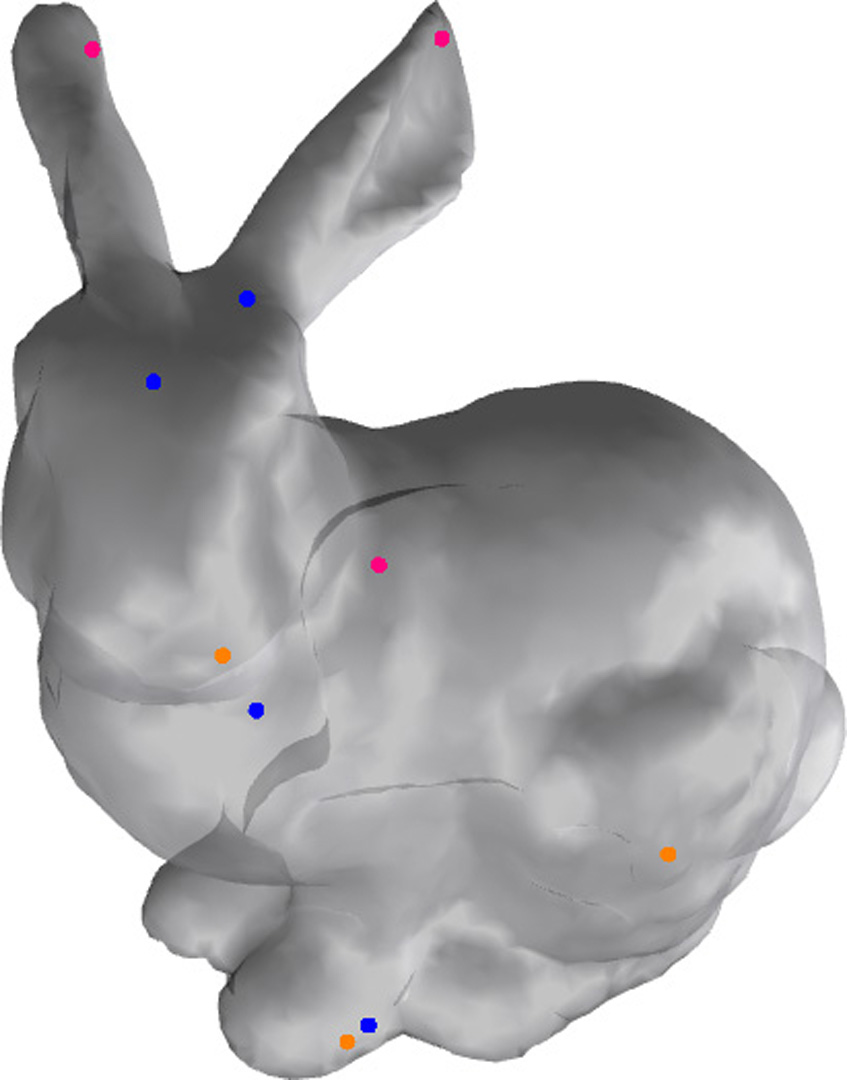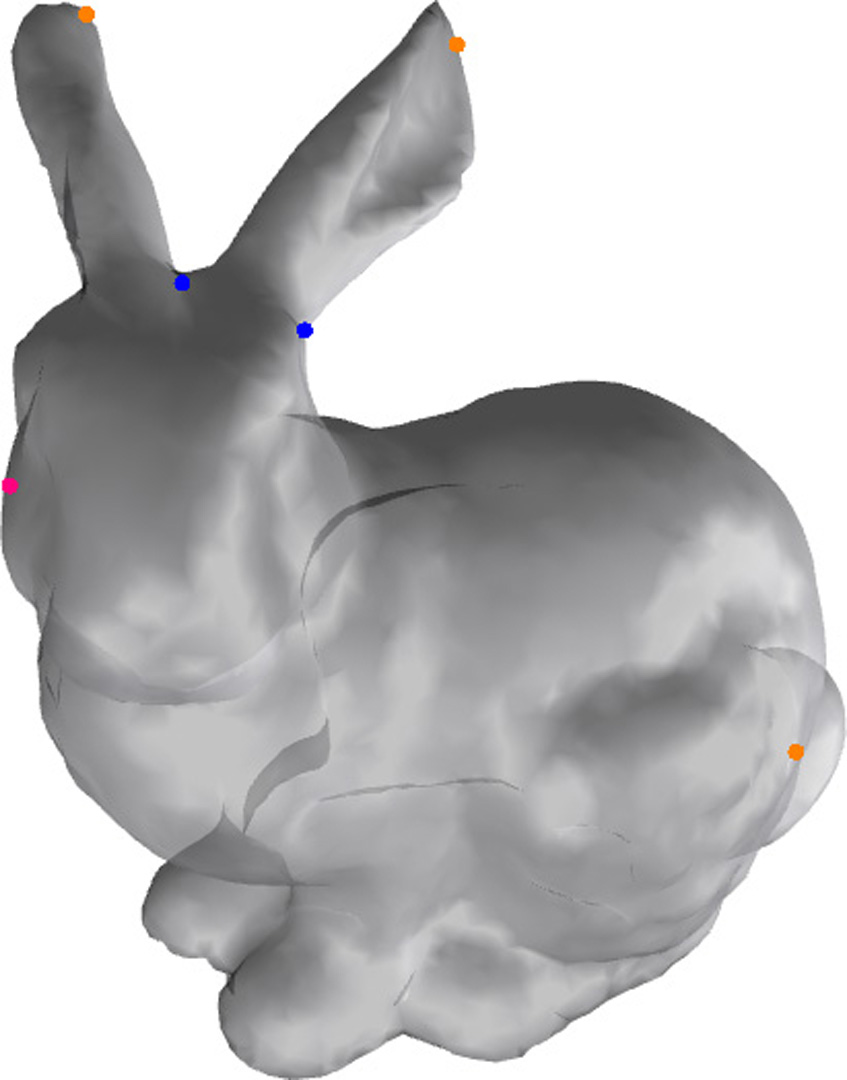“Critical Points with Discrete Morse Theory” by Guo, Akleman, Ying, Wang and Liu
Conference:
Type(s):
Entry Number: 67
Title:
- Critical Points with Discrete Morse Theory
Presenter(s)/Author(s):
Abstract:
In this work, we present some of the unexpected observations resulted from our recent research. We, recently, needed to identify a small number of important critical points, i.e. minimum, maximum and saddle points, on a given manifold mesh surface. All critical points on a manifold triangular mesh can be identified using discrete Gaussian curvature, which is given as ki = 2π − Σj θi,j where ki is vertex defect (the discrete Gaussian curvature) of the vertex i and θi,j is the corner of the vertex in the triangle j. A very useful property coming with vertex defect is the discrete version of Gauss-Bonnet theorem: the sum of all vertex defects is always constant as Σi ki = 2π(2−2g) where g is the genus of the mesh. Any vertex with a non-zero vertex defect is really an critical point of the surface. However, identification of interesting critical points is hard with vertex defect alone. As it can be seen in Figure 1(a), even we ignore vertex defects that are small, too many vertices are still chosen and this information is not really useful to make any conclusion of the shape of the surface.
Additional Images:







